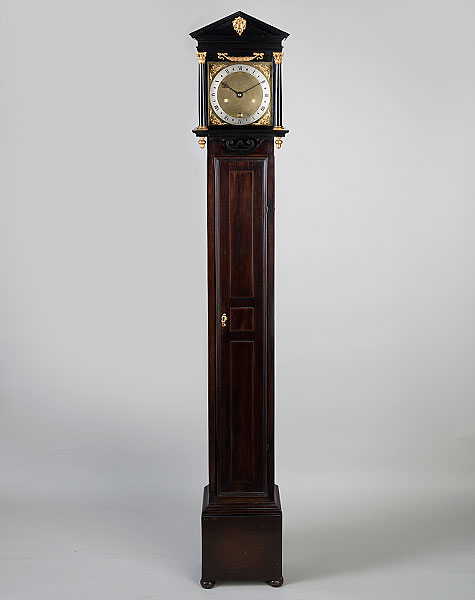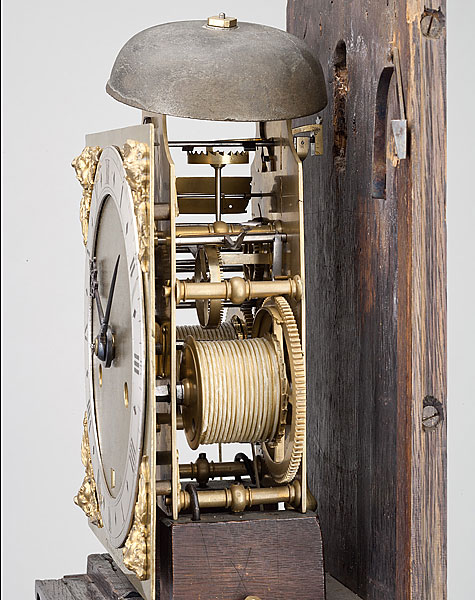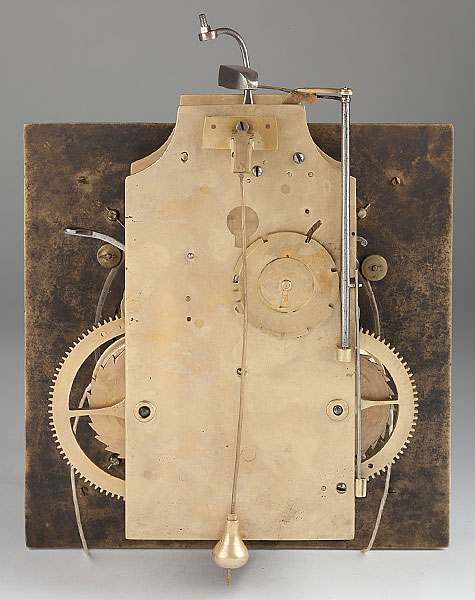[javascript protected email address]

The Messer Fromanteel








Circa 1665
Sold
6ft ¾ inches high
A very rare ebony & ebonised architectural striking 8-day longcase clock by Ahasuerus Fromanteel, London. CASE An ebony, ebonised and gilt-bronze mounted very early architectural longcase clock, with convex moulded ebonised narrow trunk with gilt bronze eagle head, shaped panel of strap work carving below the rising hood with spoon and clip, ormolu cartouche to the tympanum, ribbon-tied foliate and acanthus mount above the dial flanked by Corinthian capped columns. DIAL The latched 8¼in. square dial is signed A. Fromanteel Londini fecit below the slender silvered chapter ring with lozenge half-hour divisions, the finely matted centre with calendar aperture, pierced blued hands, winged cherub spandrels. MOVEMENT Latches to the six ringed pillar movement with scooped-shaped plates and raised on blocks, the bottom pillars secured with screwed hooks, short bob pendulum, verge escapement, high positioned outside countwheel strike with vertically pivoted hammer, bolt-and-shutter maintaining power. Notes This clock was originally constructed as a hooded wall clock, the ebonised trunk was added almost immediately afterwards. Another very similar example with the added trunk is exhibited at the Victoria & Albert Museum, London (W.10: 1 to 5-1963) PROVENANCE Bought by Samuel Messer from Mallet, 27 July 1955, (1595, (the invoice endorsed by R W Symonds) Christie’s London, 5th December 1991, lot 37, The Samuel Messer Collection Private collection UK LITERATURE Larry L Fabian, Could it have been Wren? Antiquarian Horology, Vol.10, No.5, Winter 1977, pp.550-570, fig.5
 P G Dawson, C B Drover & D W Parkes, Early English Clocks, 1982, pp.119, 166, pl.146-47, 219-20 EXHIBITED The first twelve years of The English Pendulum Clock, No.9, loan exhibition at R A Lee, Bruton Place, London, 1969
